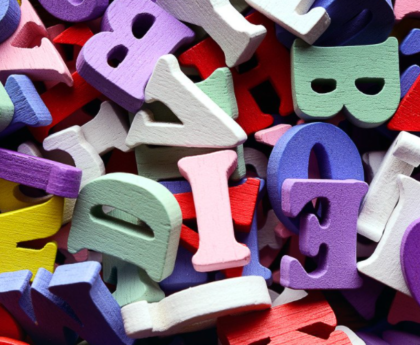Have you ever noticed how some children seem to read in choppy, disconnected sentences while others flow smoothly from one idea to the next? That difference often comes down to understanding transitional phrases – those small but mighty connecting words that bridge ideas together.
These seemingly minor language elements can actually be a major key to unlocking reading fluency and comprehension. When children understand and use words like “however,” “therefore,” and “in addition,” they’re not just connecting sentences – they’re connecting ideas, which is the foundation of true reading comprehension.
What Are Transitional Phrases and Why Do They Matter?
Transitional phrases are words or short expressions that help connect ideas between sentences and paragraphs. They act as verbal road signs, guiding readers from one thought to the next. Common transitions include words like “first,” “next,” “however,” “therefore,” and “in conclusion.”
For young readers, these connective elements are far more than just vocabulary words – they’re crucial tools for both understanding and creating meaning. Transitions help readers understand relationships between ideas – whether those relationships involve contrast, cause-effect, sequence, or addition. These connecting words provide important context clues that guide readers through text, making comprehension easier, especially for developing readers who are still building their reading skills.
Recognizing and understanding transitional phrases is not an automatic skill that develops without instruction. Rather, it requires deliberate teaching and regular practice.
How Transitional Phrases Support Early Reading Skills
Transitional phrases serve as critical bridges between decoding (sounding out words) and true reading comprehension. When children learn to recognize and understand these connective elements, they gain valuable tools for making sense of what they read.
One of the most important ways transitional phrases support early reading skills is by improving fluency. When readers recognize transitional phrases and understand their meaning, they naturally group words together more effectively, creating more fluid, meaningful reading patterns. This improved phrasing directly contributes to better prosody (the rhythm, stress, and intonation of speech).
Beyond fluency, transitional phrases provide essential context for understanding how ideas fit together. Consider these two sets of sentences:
Without transitions: “Sam couldn’t find his homework. He looked everywhere. His teacher was upset. She gave him another day to turn it in.”
With transitions: “Sam couldn’t find his homework, so he searched everywhere. Even though his teacher was upset, she still gave him another day to turn it in.”
The second example provides clear signals about the relationship between ideas, making the narrative easier to understand. For young readers who are still developing comprehension skills, these signals act like a roadmap through the text.
For children with reading difficulties, transitional phrases can be particularly beneficial because they provide explicit cues about text structure. When children understand that “for example” signals an illustration of a concept or that “however” indicates a contrasting idea, they develop a deeper understanding of how information is organized within texts.
Parents can support their children’s understanding of transitional phrases by drawing attention to these words during shared reading time. Simply pausing to discuss what words like “therefore” or “meanwhile” tell us about the relationship between ideas can significantly enhance a child’s comprehension skills.
Types of Transitional Phrases for Young Readers
Not all transitional phrases are equally appropriate for young readers. Children typically develop an understanding of different types of transitions in a somewhat predictable sequence:
Beginning readers (ages 5-7):
- Sequence transitions: first, next, then, finally
- Simple additive transitions: and, also, too
- Basic contrast: but
Developing readers (ages 7-9):
- More complex sequence: meanwhile, at the same time
- Stronger additive phrases: in addition, furthermore
- Expanded contrast: however, on the other hand
- Basic cause-effect: because, so
Advancing readers (ages 9+):
- Sophisticated additive: moreover, additionally
- Nuanced contrast: nevertheless, although, despite
- Complex cause-effect: therefore, consequently, as a result
Teaching Transitional Phrases to Struggling Readers
For children who struggle with reading, explicit instruction in transitional phrases can make a significant difference. Unlike proficient readers who might naturally pick up on the function of these connecting words, struggling readers often need targeted support.
Effective strategies include:
- Color-coding or visual highlighting to make transitional phrases stand out in text
- Using the “think-aloud” technique, where you verbalize your thought process as you encounter transitional phrases
- Directly teaching what specific transitional phrases mean and how they signal relationships between ideas
Games can be particularly effective for reinforcement. For instance, “Transition Match-Up” involves creating sets of sentence cards that can be connected with appropriate transitional phrases. Children must select the correct transition to join the sentences meaningfully.
Most importantly, be patient and provide ample practice opportunities.
Activities to Practice Transitional Phrases at Home
Turning the learning of transitional phrases into engaging, playful activities can transform what might seem like dry grammar work into meaningful learning experiences. Here are several activities you can easily implement at home:
- Transition Word Hunt: During regular reading time, turn identifying transitional phrases into a scavenger hunt. Give your child a list of common transitions to look for, and have them mark each one they find with a sticky note.
- Story Sequence Cards: Create simple story cards with pictures representing different events. Ask your child to arrange them in order and then tell the story using appropriate sequential transitions (first, next, then, finally). This activity builds both narrative skills and transition usage in a concrete, visual way.
- Sentence Linking Game: Write pairs of related sentences on separate strips of paper. Then, create cards with various transitional phrases. Challenge your child to select the most appropriate transition to connect each pair of sentences, discussing why certain transitions work better than others.
- Transition Concentration: Create a memory-style matching game where players must match transitions with their function or category (e.g., matching “however” with “shows contrast” or “firstly” with “shows sequence”).
- Cloze Passages: Remove transitional phrases from a paragraph and replace them with blanks. Have your child fill in the blanks with appropriate transitions from a word bank. Start with simpler texts and gradually increase complexity as their skills improve.
- Comic Strip Conversations: Use comic strip templates where characters are having a conversation. Have your child fill in dialogue bubbles, encouraging them to use transitional phrases to show relationships between the speakers’ ideas.
Technology can also support learning transitional phrases. Educational apps that feature sentence building and story creation often incorporate transitional phrases as part of their language development tools. When selecting apps, look for those that provide clear feedback and scaffolded support for using transitions appropriately.
Remember to provide specific praise when your child correctly uses transitional phrases, both in reading and in conversation. Statements like “I noticed how you used ‘however’ to show a different idea – that really helped me understand your thinking!” reinforce the value of these connecting words and encourage continued use.
From Transitions to Comprehension
Transitional phrases may seem like small elements in the vast landscape of reading skills, but their impact on comprehension is profound. By helping your child master these connecting words, you’re providing them with essential tools not just for reading success, but for clear thinking and effective communication.
For parents looking to support their children’s reading development comprehensively, the Reading.com app provides structured, systematic instruction in all aspects of reading, including the critical connecting elements we’ve discussed in this article. With engaging activities specifically designed to build reading fluency and comprehension, it’s an excellent companion to the home-based activities outlined above.
Start your free 7-day trial of the Reading.com app today and discover how our science-backed approach can help your child master transitional phrases and other essential reading skills.





